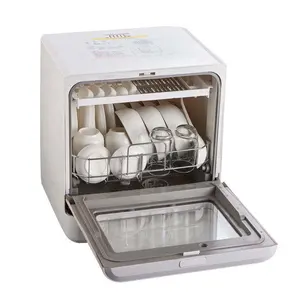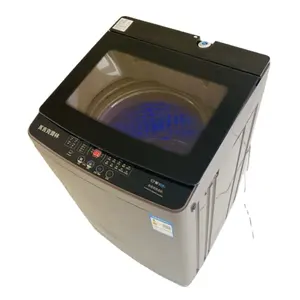Popular in your industry





































































Top categories
About ventless garage heater
Introduction
As winter approaches, maintaining a comfortable temperature in your garage becomes a priority. Whether you use it as a workspace or for storing vehicles, a well-heated garage can make a significant difference. Among the various heating options available, ventless garage heaters stand out for their efficiency, safety, and cost-effectiveness. This article delves into the basics of garage heaters, the benefits of ventless models, and key considerations when choosing the right heater for your garage. We'll explore the types of heaters, their energy efficiency, ease of installation, safety features, and cost-effectiveness, providing you with comprehensive knowledge to make an informed decision.
Understanding the Basics of Garage Heaters
Garage heaters are essential for maintaining a comfortable temperature in your workspace during colder months. There are two primary types of natural gas heaters for garages: forced-air heaters and low-intensity infrared heaters. Forced-air heaters blow warm air, similar to conventional furnaces, while infrared heaters radiate heat. Both types require an electrical hook-up and venting to the outside. The choice between these two depends on your specific needs, such as whether you'll be working on projects that generate dust, or your budget, as forced-air heaters are generally less expensive upfront.
What is a Ventless Garage Heater?
A ventless garage heater is a single room heating device that uses the oxygen in the room to fuel the combustion process, efficiently creating heat. Typically, the unit is mounted on your wall and can be turned on and off as needed. These heaters are often used to warm up spaces like basements or three-season rooms. However, they require careful usage. They are not meant for long-term heating or heating more than one room, and they should always be used under constant adult supervision. It's also important to ensure fresh airflow in the room while using these heaters.
Types of Garage Heaters
There are several types of garage heaters you can consider. Many people in remote areas rely on wood or corn stoves as their primary form of heat, but remember to use clean, dry firewood. If you already use natural gas in your home, extending it to your garage could be a viable option. Electric heating offers various options, including portable heaters for small spaces and baseboard heaters for permanent installation. These can be installed anywhere, most commonly in walls or ceilings. If you're extending your existing HVAC system, it can be a cost-effective approach to heating your garage.
Why Choose a Ventless Garage Heater?
Ventless gas heaters are an excellent choice for both home and commercial use. Their vent-free design eliminates the worry of fumes, making them safe for indoor applications. They are perfect for heating your garage or shop area, allowing you to work without concern. These heaters are energy-efficient and are offered by top brands available on Alibaba.
Energy Efficiency
Ventless garage heaters are highly efficient. They can quickly heat a space, but they are not intended for long-term heating or heating more than a single room. They were designed only to be used when essential and under strict parental guidance. Furthermore, because these heaters do not circulate fresh air from outside during heating, it is critical to open a window when using them. The heater absorbs oxygen and emits carbon dioxide throughout the burning process with ventless gas heaters. This would take some time, but the heater might eventually suck up all of the air in the space, making breathing more difficult.
Ease of Installation
Installation of garage heaters, whether forced-air or infrared, requires careful consideration of placement and venting. However, the installation details for a forced-air heater aren't as exacting. Most are placed in a corner, near a gas line and an electrical outlet. The instructions will indicate the exact spacing required between the unit and the sidewalls or ceiling. Infrared heaters, on the other hand, must be installed a minimum of 7 ft. above the floor, and must hang down a minimum of 4 in. from the ceiling. It's critical that you make sure objects below are not too close.
Safety Features
Ventless garage heaters come with two key safety features. The first is a thermocouple, which closes the gas valve if no flame is detected, preventing gas leaks. The second is an Oxygen Depletion Sensor (ODS) that shuts down the heater if oxygen levels in the heated area drop below 18%. These features ensure that the heater operates safely, providing you with a reliable and worry-free heating solution for your garage.
Cost-Effectiveness
Ventless garage heaters, similar to vent-free propane space heaters, are cost-effective solutions for heating challenges. They are less expensive to install than vented heaters, offering greater installation flexibility as they don't require access to an external wall for venting. Moreover, they are available in a range of sizes to suit most spaces, making them a cost-efficient choice for any garage with a heating challenge. However, it's important to do your research before installation, considering local building codes and safety measures.
How to Choose the Right Ventless Garage Heater
Choosing the right ventless garage heater involves considering several factors. The size of your garage is crucial as vent-free heaters are suitable for spaces up to 1,000 square feet. The heater's BTU rating is also important, with options ranging from 6,000 to 30,000 BTUs. Safety features are another consideration, with all vent-free heaters having an Oxygen Depletion Sensor (ODS) for safety. Lastly, review the energy source. Vent-free heaters are available in both natural gas and liquid propane options. Remember, the thermostat options on vent-free heaters may be limited.
Consider the Size of Your Garage
The size of your garage plays a crucial role in determining the ideal ventless garage heater. The total square footage and ceiling height are key metrics to consider. For instance, a 1 car garage of 200-300 sq ft requires a heater size of 15,000 to 25,000 BTUs. A 2 car garage of 500-700 sq ft needs 30,000 to 45,000 BTUs. A 3 car garage of 750-900 sq ft requires 45,000 to 55,000 BTUs. And a 4 car garage with over 1,000 sq ft needs over 55,000 BTUs. The ceiling height also impacts the heater size. A garage with less than 8 feet ceiling requires a 10%-20% smaller heater than one with over 8 feet ceilings.
Check the Heater's BTU Rating
One of the key factors to consider when choosing a ventless garage heater is the BTU rating. BTU, or British Thermal Unit, is a measure of heat output. The model we're featuring from Alibaba has a BTU rating of 30,000. This high BTU rating means it can generate a substantial amount of heat, making it an excellent choice for larger garages. Remember, the higher the BTU rating, the more heat the heater can produce. Therefore, always check the BTU rating to ensure the heater will meet your specific heating needs.
Evaluate Safety Features
Ventless garage heaters come with several safety features. The thermocouple closes the gas valve if no flame is sensed, preventing gas leaks. Additionally, the Oxygen Depletion Sensor (ODS) shuts the heater down if the oxygen levels in the heated area drop below 18%. These features ensure the heater operates safely, providing you with peace of mind while you stay warm. However, these heaters are not meant to run continuously or unattended, and they are not approved for sale in certain locations due to indoor gas heating restrictions.
Review the Energy Source
Ventless garage heaters can run on either propane or natural gas, making them versatile in terms of energy source. However, these heaters are set up to run either Propane only or Natural Gas only, and there are no available conversion kits. The proper pressure for a Propane heater is 11in-14in W.C. (water column) [1/2in PSI] and for a Natural Gas heater is 5in-7in W.C. It's important to note that vent free heaters are not approved for sale in certain locations like California and Canada due to restrictions on gas heating products being used indoors.
Conclusion
In conclusion, ventless garage heaters offer an efficient, safe, and cost-effective solution for heating your garage during the colder months. Their high energy efficiency, ease of installation, and robust safety features make them an excellent choice for both residential and commercial use. However, it's crucial to consider factors such as the size of your garage, the heater's BTU rating, and the energy source before making a purchase. Also, remember to adhere to safety guidelines and local regulations when using these heaters. With the right ventless garage heater, you can ensure a warm and comfortable workspace throughout the winter.


























